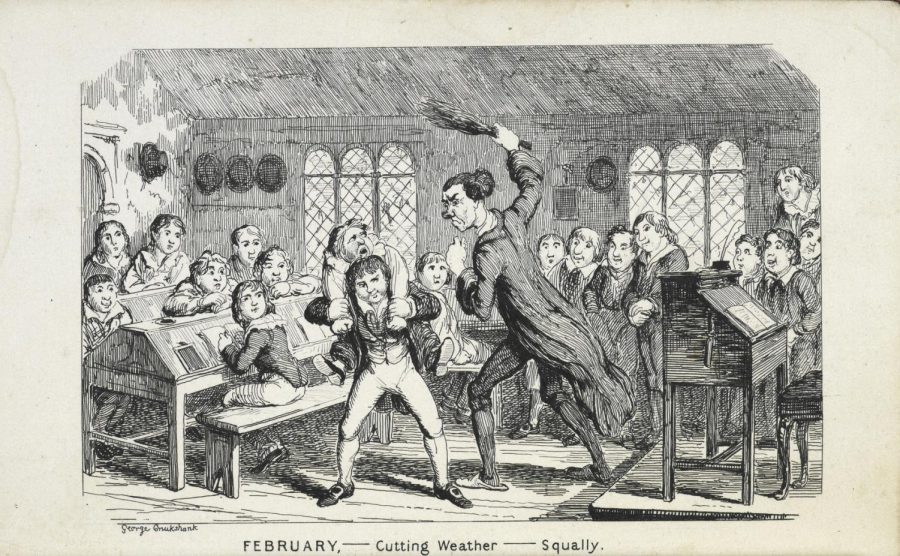Image taken from Cruikshank’s sketches
A teacher punishes a student for misbehaving.
Corporal Punishment in Our School Systems
Corporal punishment in schools is not a thing of the past.
For a child, staying on track with school and social lives is challenging at any age. However, a child should not be worried about is physical punishment in school. For the nineteen primarily southern states schools, corporal punishment is another fear provided in a school system.
Corporal punishment refers to physical pain and trauma for undesirable behavior from a student in school. Most would believe that its normal to occasionally talk over a teacher or say something controversial in the learning environment, when it is challenging for kids to sit silently all 7 hours they are required to be in school. In nineteen states, school authorities are allowed to hit children using tools that hurt student’s bodies. Authorities may also embarrass children publicly which can also be traumatic.
James Ingraham, along with nearly 160,000 children suffer from corporal punishment. Ingraham v. Wright was a court case in 1977 where a students mother sued a middle school principal for hitting her son, James when he stated that he had done nothing incorrect. James’ principal became enraged when James said he did nothing wrong. James’ punishment of five swats turned into 20 swats to his rear. The swats left him out of school for 10 days and the many bruises suggested he needed medical attention. This case is later “proven” not to violate the Eighth Amendment which states that cruel and unusual punishment is not allowed. It is cruel due to the students injuries, and the number of swats given.
Picture yourself as a parent, coming home to a brutalized child not because of you, your spouse, or a bully at school, but an adult that you put all of your trust in. In nineteen states, it is not rare for a parent to come home to see that their child has been abused in school when they believed that their kid had been having a good day. It can put a toll on how the child feels going back to school and who they trust for the rest of their lives, the feeling does not go away with time. A parent also will carry it with them, making them feel guilty for sending their child to school knowing corporal punishment could happen.
It is normal that school officials get irritated by students behaviors. However, no matter how many warnings the students may receive, they still tend to do little to better their behaviors. This does not give any human being the authority to physically hurt another person let alone a child, especially in a school.
Citations
Aacap. Frequently Asked Questions, www.aacap.org/aacap/policy_statements/1988/corporal_punishment_in_schools.aspx.
Clark, Jess. “Where Corporal Punishment Is Still Used In Schools, Its Roots Run Deep.” NPR, NPR, 12 Apr. 2017, www.npr.org/sections/ed/2017/04/12/521944429/where-corporal-punishment-is-still-used-its-roots-go-deep.
“Home – PMC – NCBI.” Current Neurology and Neuroscience Reports., U.S. National Library of Medicine, www.ncbi.nlm.nih.gov/pmc/.
